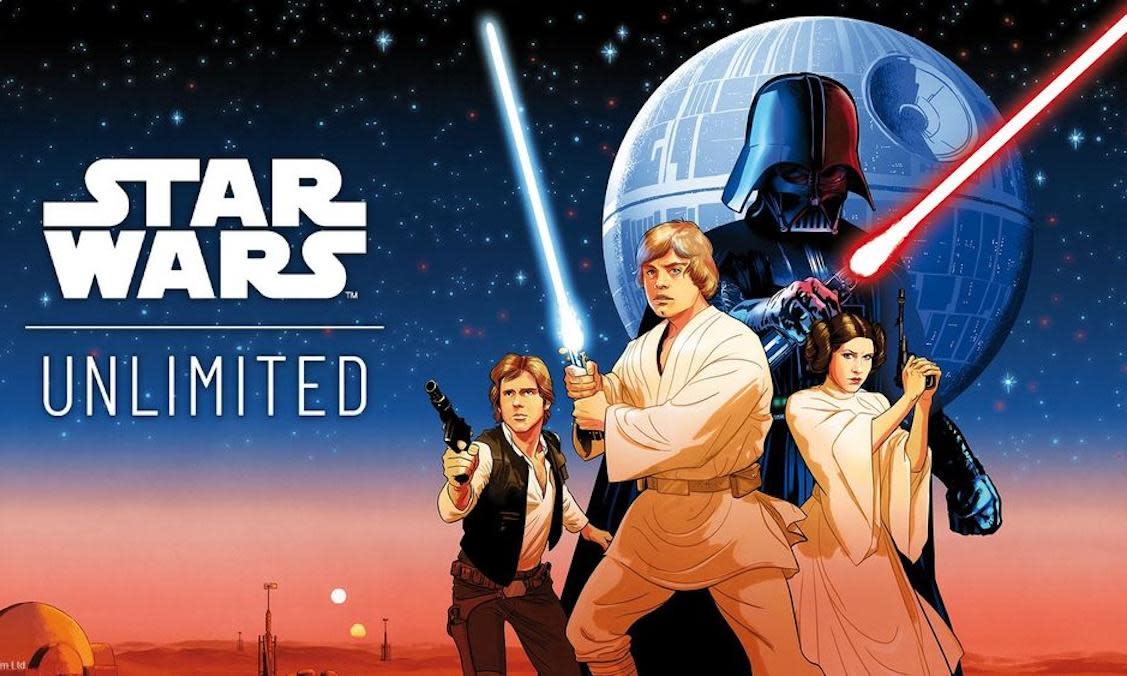‘I turned C-3PO into a lightsaber-wielding psychopath’: a week with the Star Wars Unlimited card game

One of the most appealing aspects of games set in the Star Wars universe is that you get to concoct scenes and stories we would never see in the movies. Whether you’re playing Knights of the Old Republic, Jedi: Fallen Order or the old Star Wars role-playing board game designed by Greg Costikyan in the 1990s, there will be individual moments unrepeatable on the big screen. I know this, because I just won a round of the new trading card game Star Wars Unlimited thanks to a heroic C-3PO wielding Luke Skywalker’s lightsaber.
On a basic level, Star Wars Unlimited works like most modern trading card games, such as Yu-Gi-Oh! and Magic: The Gathering. You and an opponent each have a deck of cards, most of which feature a single character or vehicle, with a number for health and another number for power/damage. Usually the character will also have special abilities described on the face of the card, which add strategic depth. Players then take it in turns to place cards into the arena and attack their opponent’s forces, and the winner is the player who destroys their rival’s base. Star Wars Unlimited’s starter kit gives you two complete decks, one of imperial forces and one of the rebels, but you can also buy booster packs to start customising your army and creating your own themed decks.
What makes this different of course is that it is Star Wars. The first set of cards, Spark of the Rebellion, is set in the era of the classic trilogy and Rogue One, so it’s rich in nostalgia. Play as the Rebels and you’ll be defending your remote base with Luke Skywalker as your commander and an array of familiar allies: Leia, Chewbacca, the consular security forces from the start of A New Hope, even the moustache-wielding Cloud City guards. There are X-Wing fighters and Snowspeeders too, as well as their imperial counterparts. Lovely card illustrations elevate the nostalgia, with neat, detailed art that really brings them to life.
It resembles the digital card game Marvel Snap, which similarly combines accessible, familiar gameplay with gorgeous card art and a good understanding of the characters and lore. I really enjoyed the Event cards, which draw from specific moments in the movies. There’s a card entitled “Shoot First”, which lets you attack the enemy before they have a chance to respond, with an image of Han sitting in the Mos Eisley cantina holding a smoking laser gun.
“It was a fun challenge to match card values with such beloved characters and vehicles,” says lead designer Danny Schaefer, who created Unlimited with a small team at veteran board and card game studio, Fantasy Flight Games. “We all brought so much trading card game experience and so many ideas for each character and vehicle. We’ve never put more resources into a game before, so these three years of development were filled with some passionate debates. We are all huge Star Wars fans, each with our own unique experience of the franchise … we can’t wait for every game player to get to see their vision of Star Wars reflected in the game.”
The game has been designed with newcomers in mind. There are three basic card types – Units (your characters and space ships), Upgrades (which can be added to unit cards to give them extra power) and Events. Play takes place over just two rounds – Attack and Regroup – which is a huge contrast to the complex structure of a standard Magic: The Gathering round, and the card text is easy to understand. You play your cards quickly, trading moves with your opponent like a game of speed chess: attack, defend, attack again with a different card, build toward a major push, then enact it.
But it’s not just for beginners. Combining cards and figuring out when to play your key moves makes things surprisingly deep, and interesting possibilities emerge. I was losing one game badly until I realised I could combine C-3PO, who has a weak attack but excellent defence, with Luke’s lightsaber card, boosting his attack. Suddenly my protocol droid is slashing his way through stormtroopers like a golden psychopath.
According to the team behind Unlimited, this combination of immediacy and hidden depth is exactly what they were going for. “We did so many trials with a critical mindset so no detail was left unnoticed,” says Schaefer. “Each designer has their expertise – some of us were focused on the theme and some on competitive deck building, allowing each game to be analysed from several different perspectives. We had a team of seasoned game designers who have been a part of huge card games and so everyone had a good sense of what we needed to do to make this game a success. We iterated over different versions of cards to find the best balance.”
This isn’t the first time Star Wars has been a trading card game. Magic: The Gathering creator Wizards of the Coast made a version in the early 2000s, and then Fantasy Flight Games itself produced Star Wars: Destiny in 2016, which had you rolling dice. But Unlimited feels more compact, streamlined and accessible, and though it’s still early days, players I’ve spoken to are figuring out how to exploit the straightforward mechanics for unexpected effects.
Personally, I’ve enjoyed horrifying my friends by dispatching an AT-AT or Emperor Palpatine when they least expect it, while asking Alexa to play the Imperial March; I really appreciate how the card illustrations depict very specific moments in the movies, but at the same time, you can happily go into battle against a squad of stormtroopers with just a 2-1B Surgical Droid – and win. Star Wars Unlimited knows that the perfect version of Star Wars is the one that exists in your head.


